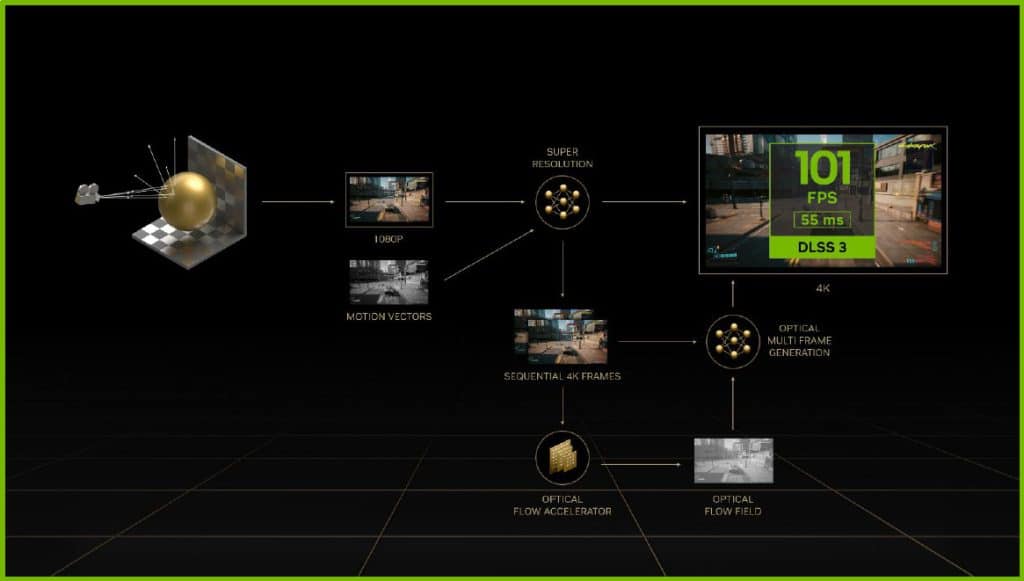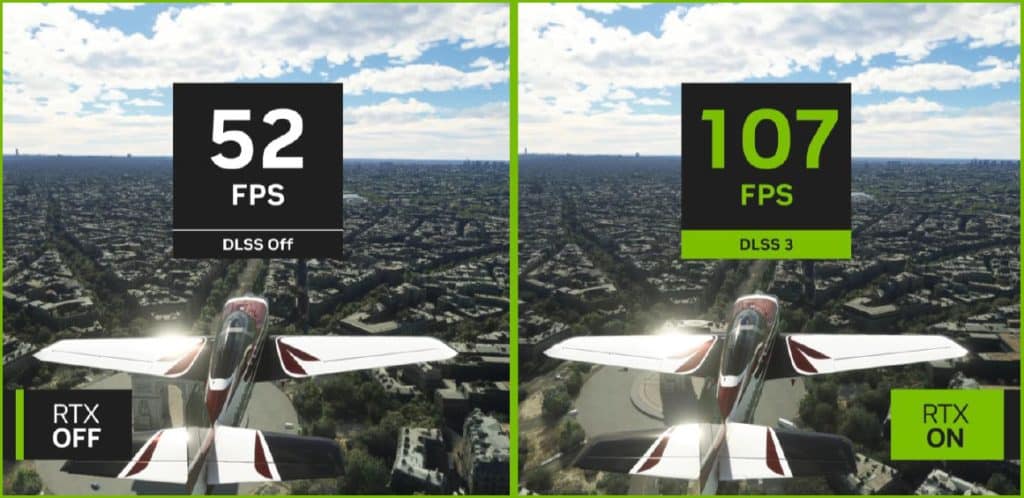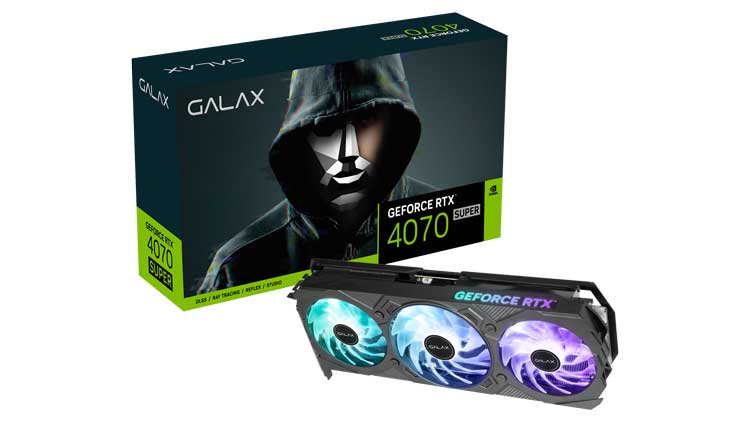DLSS 3 & Reflex
Nvidia initially created DLSS Super Resolution to utilize a convolutional autoencoder AI model and take the low-resolution current frame and the high-resolution previous frame to reconstruct a high-resolution current frame on a pixel-by-pixel basis. So DLSS trains the AI model to predict an ultra-high resolution 16K reference image. The difference between the predicted and reference image is used to train the neural network. This process is repeated tens of thousands of times until the network can predict a high-quality image.
According to NVIDIA’s claims, 83% of 40 Series gamers currently enable ray tracing, and 79% enable DLSS. Personally, I enable ray tracing whenever possible because I prefer quality over performance, and if I notice low FPS, I proceed with DLSS.
The major breakthrough in DLSS 3 is that it utilizes AI to generate entirely new frames instead of just pixels. DLSS 3 has four components: A new Optical Flow Accelerator, game engine motion vectors, a convolutional autoencoder AI frame generator, and our Reflex super-low-latency pipeline.
DLSS 3 processes the new and prior frames to discover how the scene changes. The Optical Flow Accelerator provides the neural network with the direction and velocity of pixels from frame to frame. Pairs of frames from the game, along with the geometry and pixel motion vectors, are then fed into a neural network that generates the intermediate frames. DLSS 3 generates entirely new frames without conventional graphics pipeline processing, boosting, according to NV’s claims, game performance by up to 4x in GPU-bound cases over brute force rendering.
Since DLSS 3 generates a new frame without involving the game, it benefits both GPU and CPU-limited games. In CPU-limited games, especially ones heavy on physics or large world games, DLSS 3 enables Ada GPUs to render the game at a much higher frame rate than the CPU can compute the game.
DLSS 3 works simultaneously with DLSS Super Resolution (aka DLSS 2). DLSS 3 games are backward compatible with DLSS 2 technology, but you should keep in mind that DLSS 3 technology is only supported on GeForce RTX 40 Series GPUs. To wrap up, it includes three main features: new Frame Generation tech, Super Resolution (the key innovation of DLSS 2), and Reflex. Developers simply integrate DLSS 3, and DLSS 2 is supported by default. To support the owners of previous-generation GPUs and increase performance on the current ones, NVIDIA states that it continues to improve DLSS 2 by researching and training the AI for DLSS Super Resolution and will provide model updates for all GeForce RTX gamers, as we’ve been doing since the initial release of DLSS.
Reflex
The Reflex SDK allows game developers to reduce latency in games by up to 2x. It works by aligning game engine work to complete just in time for rendering, eliminating the GPU render queue, and reducing CPU back pressure in GPU-bound scenarios. The result is lower latency, improved responsiveness, and aiming. NVIDIA Reflex is automatically enabled with DLSS 3 Frame Generation turned on.
Reflex dynamically reduces latency by combining both GPU and game optimizations:
• In GPU-bound cases, the Reflex SDK enables the CPU to start submitting rendering work to the GPU just before it finishes the prior frame—significantly reducing and often eliminating the render queue. This allows for better response times and increased aiming precision. Reflex also reduces back pressure on the CPU, enabling games to sample mouse input at the last possible moment. While similar to the driver’s Ultra Low Latency mode technology, it’s superior according to NVIDIA since the technique used to control CPU render submission is happening directly from within the game engine.
• The Reflex SDK also boosts GPU clocks and allows frames to be submitted to the display slightly sooner in some heavily CPU-bound cases.






